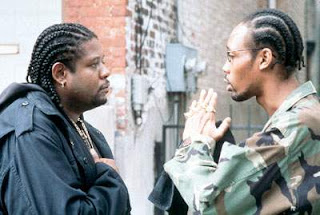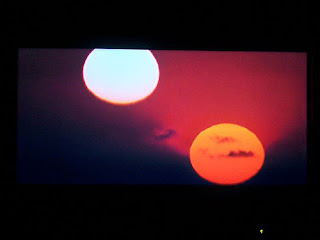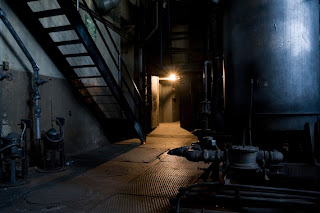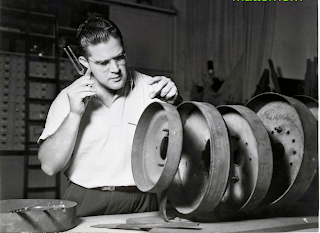
Today let's finish up the Ghost Dog projects from last time. Once you've got your ADR recorded, you should concentrate on the following:
Part 3 - The Score
You guys are all pros on producing scores by now. For this piece, the challenge is to try to figure out what the mood of the scene is and make that happen musically. What would you say was the mood of the original piece? How did the composer (the RZA) help to create the mood with music?
- Create a Stereo Aux Input
- Insert Reason on it.
- Create an original piece of music that fits the mood of the scene.
This part is sort of optional, but can help to make the scene more convincing, if you want to try. In the original scene, there were hardly any sounds beyond the dialog and the music (there is a faint sound of pigeons fluttering at the end).
The one thing I want you to add is some street sounds in the background when the dialog happens.
You can add some additional sounds if you choose with the following restriction: do NOT add sounds that distract the audience's focus from what's happening visually! (e.g. gunshots, screaming, random sounds, etc.)
Here are a few ideas for sounds that would be appropriate:
- Pigeons
- Footsteps
This is really important. Once we've got all of our sound elements in the session, we need to make sure that they're all clean and balanced correctly. We also want to add some
First, clean it up...
Now let's set up a good balance by paying attention to the overall levels of all the tracks.
- Go to Track>New and create a Stereo Master Fader.

- In the Inserts section of Master Fader track, click on Multichannel Plugin>Sound Field>Phase Scope.
 You should see this pop up:
You should see this pop up: The meters on the left side
The meters on the left side  will help us to see exactly how loud the peaks of our tracks are.
will help us to see exactly how loud the peaks of our tracks are. - Now Solo the dialog tracks.

- Play the part with the dialog back and watch the levels on the Phase Scope meters.
- Important: dialog in audio post production should hit about -6dB at its loudest parts. If your dialog is not loud enough, turn up the faders on the tracks so that the peaks are at -6dB.

- Unsolo the dialog tracks.
- Listen to the whole thing including the music. How is the balance between the music and the dialog? In general, they should be about the same volume (we're going to adjust this next), but if the music is way louder or softer than the dialog, raise or lower it to whatever it needs to be.
- Use the Grabber Tool.
- Zoom in so that you can see the dialog clips well.
- On the Aux Track, you should see a line that goes across the screen showing the volume level. Right before the dialog starts, click on the line to create a dot.

- Click on the line at the end of the dialog to create another dot.

- Make two more dots in between the beginning and the end of the dialog.

- Click and drag these dots down to make the volume come down during this scene and then come back up at the end.

- Listen back to this scene and move the dots around to adjust them. The goal is to make this dip sound smooth and not very noticeable to the audience.
- Save
- Bounce to Quicktime movie.
- Name the file: your name_Ghost Dog ADR
- Put a copy of the Quicktime movie in Shared Media>Student Work>Ghost Dog ADR












































